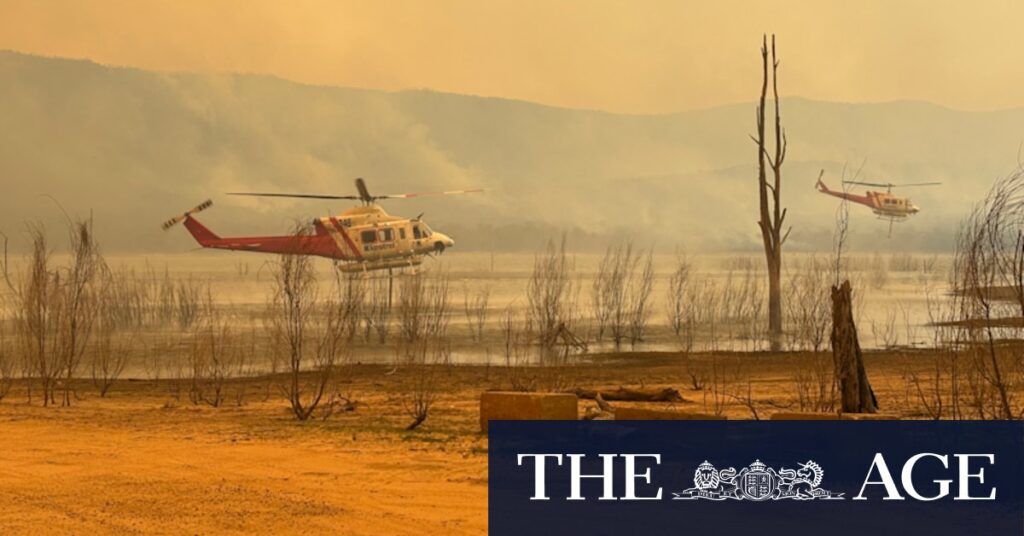
A plan to develop a backup system for Victoria’s emergency services, which could have mitigated this week’s Triple Zero technology outage, was quietly abandoned, resulting in millions of dollars in taxpayer losses. Concurrently, the rollout of a much-anticipated replacement system has been delayed, raising concerns among staff about facing another fire season with unreliable technology.
On Wednesday morning, a power outage led to the failure of the agency’s computer-aided dispatch (CAD) system for over three hours. This forced call takers and dispatchers to revert to handwritten job cards, delaying emergency response times. “An issue with the battery, it’s taken everything out,” a call taker remarked, describing the chaotic scene at the Burwood East center.
Abandoned Backup System and Delayed Replacement
For several years, there was a plan to create an “alternative failover” system to deploy during main CAD failures. Initiated in early 2021, this “alternate CAD” was intended as a redundancy measure. However, the project was shelved, wasting $5.3 million, as the software was deemed “unviable” according to the Victorian government IT dashboard. Triple Zero Victoria offered a different narrative, claiming most work was completed, but some components were discontinued in favor of a new CAD project.
Despite assurances that the Next Generation CAD project is on track, insiders and union representatives report a delay of at least six months. A leaked presentation suggested deployment was initially planned for October next year, but a recent memo indicates a shift to “mid 2027”.
“The project has been worded quite cleverly so that it’s still on track, but they have informed AV [Ambulance Victoria] that there will be a six-month delay,” said Victorian Ambulance Union secretary Danny Hill.
Concerns Over Current System and Leadership
Concerns over the outdated CAD system have been ongoing, with staff highlighting its instability and frequent glitches. The current system, described as akin to the unstable game Jenga, has been cobbled together over 30 years, leading to frequent malfunctions. Hill noted, “There are regular glitches, or it freezes, or there might be a function that doesn’t work effectively.”
These technical issues coincide with declining support for leadership. In August, a staff survey revealed perceptions of senior leaders had fallen below levels seen during the pandemic’s call answering delays. During 2021 and 2022, 33 people died due to Triple Zero delays or extended ambulance waits. A review attributed these delays to inadequate state funding to meet demand.
Legal Disputes and Workplace Challenges
The agency is also embroiled in a legal dispute with the Communication Workers Union (CWU) over staff dress codes on weekend nights. The CWU argues for casual attire, while Triple Zero Victoria has engaged legal representation to uphold uniform policies. CWU assistant secretary John Ellery expressed concern over the agency’s expenditure on legal fees instead of service improvements.
“Asked about the cost and nature of the dispute, Triple Zero Victoria said the agency had not launched the proceedings, and that because it was the subject of an upcoming hearing it would be inappropriate to comment further.”
Meanwhile, the agency faces WorkSafe provisional improvement notices for unresolved workplace health and safety issues, including inadequate training for call takers advising callers trapped in burning buildings. Triple Zero Victoria is reportedly addressing these concerns with a partner agency.
Looking Ahead
This week’s CAD outage resulted in delays for some Victorians seeking emergency assistance, though specific wait times remain undisclosed. A Triple Zero Victoria spokeswoman stated that calls continued to be taken and responders dispatched throughout the incident. However, the underlying issues with the CAD system persist, raising questions about the agency’s readiness for future emergencies.
As Victoria prepares for another fire season, the reliability of its emergency response systems remains a critical concern. The delayed implementation of the Next Generation CAD and ongoing technological challenges highlight the urgent need for effective solutions to ensure public safety.





